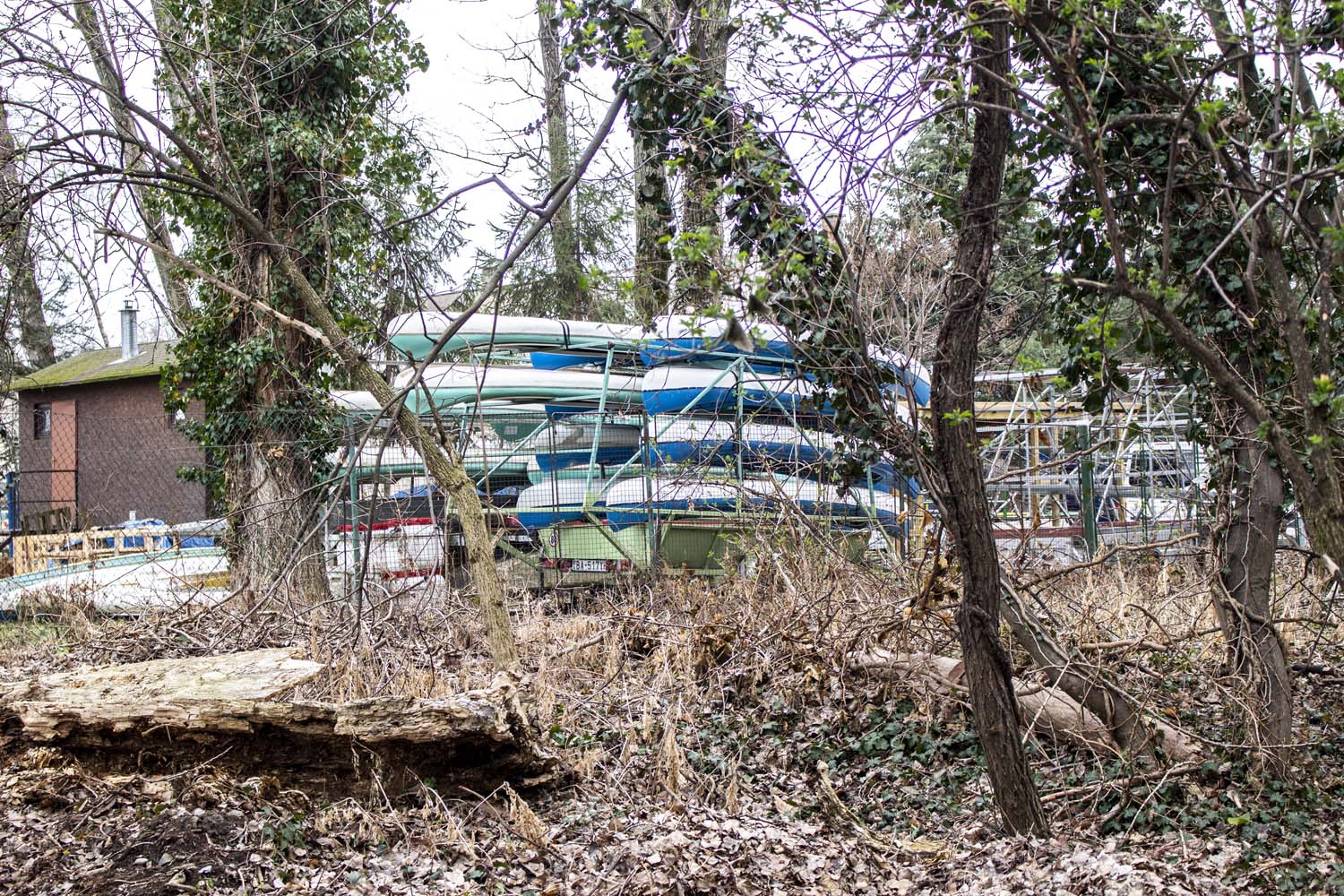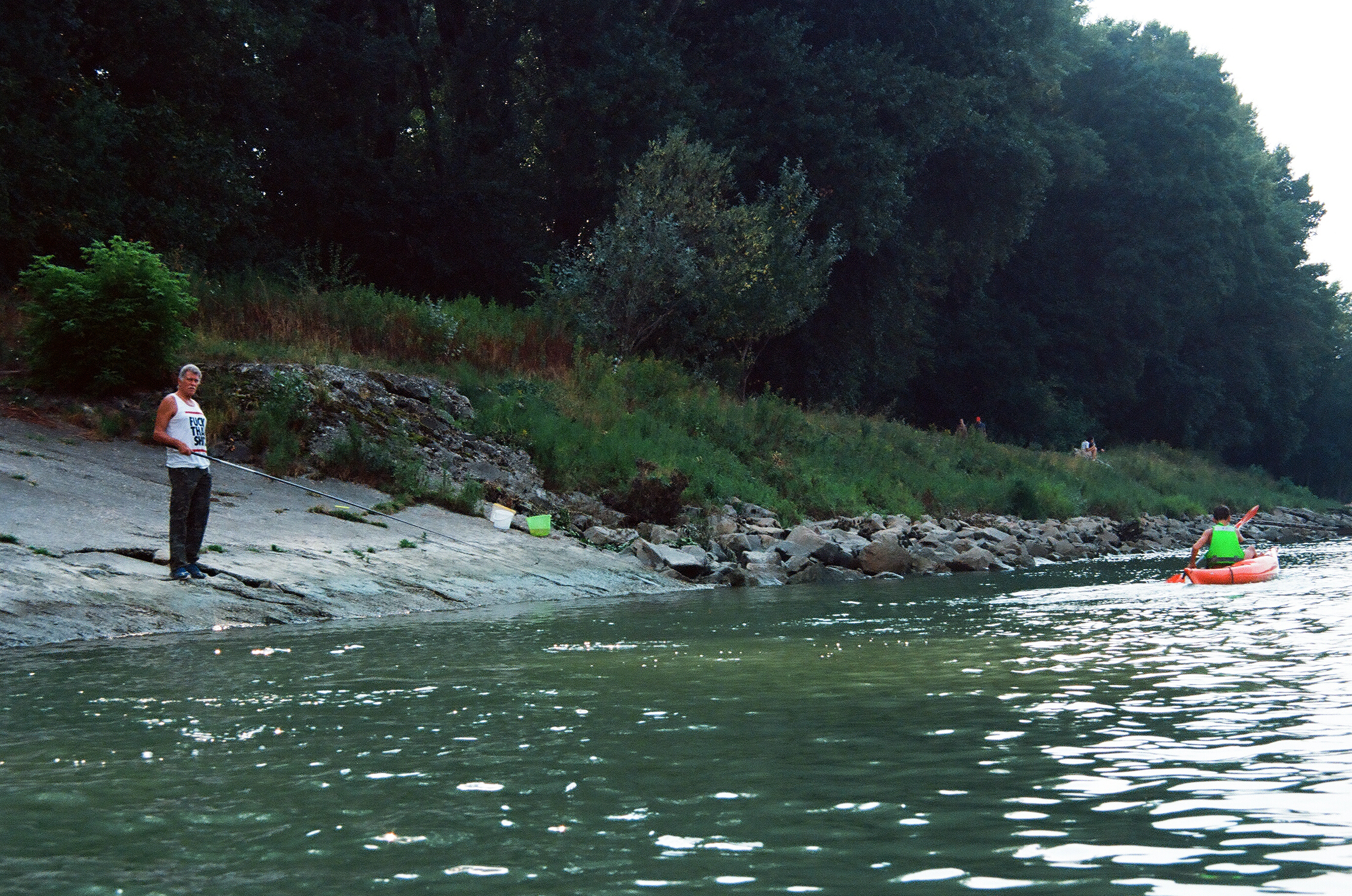THE ONLY ANSWER TO THE THREAT OF GREEN CAPITALISM IS AN ANTI-CAPITALIST
ENVIRONMENTALISM
ONLINE INTERVIEW WITH T. J. DEMOS
Ivana Rumanová
IR: In Ecology-as-Intrasectionality you talk about the necessity of conceiving the socio-political and the environmental (or more-than-human) as inseparable realms. If taken separately, social art practices can turn into poverty porn and environmental and object-oriented art into a sort of fetishism. Why is there this division and how come it has survived until now?
TJD: There are many reasons. On the one side, social justice activists are responding to urgent ongoing crises, systemic violence, and oppression in relation to structural racism, militarized police brutality, economic inequality, housing injustice, xenophobia, anti-migrant policies, queer- and trans-phobia, and emergent ethno-nationalist and fascist tendencies. People are suffering, literally dying, and we know that there are reasons some are more “killable” than others, according to current biopolitics of structural discrimination and intolerance. These are understandable as immediate concerns that overwhelm all others. Who cares if the planet is headed toward catastrophic global warming if you’re getting evicted and can’t afford to eat today? Yet we’re also in the midst of a wider environmental calamity where extractive capitalism is destroying the conditions of multi-species life and contributing to climate disaster, which is a real crisis unfolding in the present too. It is incredibly difficult to challenge species extinction or planetary warming when people are being killed, oppressed, caged, tortured, evicted, and starved. On the other hand, some environmentalists claim—speciously in my view—that social justice doesn’t matter if life in general is headed toward mass extinction. I think existence and justice are ultimately irreducible and inextricable. Nonetheless it is not difficult to see how social violence and environmental violence intersect according to the logic of capital. To insist on a more complex analysis of socio-environmental entanglements, capable of supporting a comprehensive politics and aesthetics, becomes crucial as a site of intervention in a world of increasingly siloed thinking.
IR: In the text you speak about the „tendency of eco-art to isolate and celebrate the nonhuman realm in an effort to escape anthropocentrism“. I find this observation very precise. Isn´t this process of isolation and celebration an actual equivalent to searching for a Noble savage, not in the exotic islands, but in the realm of the „non-human“?
TJD: Indeed, it’s also symptomatic of the real destruction of the nonhuman realm by extractive capital. One understandable but inadequate response to the latter is to recompose the natural in the realm of representation, whether as nostalgia or compensatory desire. The resulting danger is found in its practice of erasure, which ends up potentially and paradoxically objectifying a fiction: nature in its ontologically discreet guise, which is theoretically and ecologically impossible. Let’s be clear though: claims of so-called post-nature are self-serving and equally anthropocentric (also, clearly to the benefit of economic development, climate engineering, and other interventionist designs all too happy to get rid of any natural limits). Insofar as they deny the existence of separate, multispecies life worlds, they simplistically reject realms that are indeed—and still—fully autonomous from human activities, if not completely untouched by them. More-than-human life worlds continue to exist and reproduce, and even science is at a loss to fully comprehend their reality. The natural remains a site of ongoingness, as well as one of radical alterity and unpredictable becoming, which is far from an idealist or regressive observation, but rather one of materialist insight.
IR: I noted down the term, „indissoluble relationality“ which I liked very much. It made me think that for those (human or not) in vulnerable positions voluntary withdrawal can be a form of self-protection. Identities that are not hybrid / liquid/ relational are very often seen as backward and primitive. Isn´t there a risk of epistemic violence in this sense also?
TJD: Answering your question in reverse order, I agree that epistemic violence occurs when identities coalesce or are pressed into the immutable and nonrelational by those who think they know, forming and perpetuating unequal power relations. That is, despite the ontological truth of the indissoluble relationality of all being. (No doubt this is one reason why solitary confinement in penal institutions is understood to constitute a dehumanizing form of torture, because it violently severs the social connection that is an essential component of what it means to be human). Nonetheless, becoming invisible, practicing the politics of opacity makes complete sense, especially in the era of surveillance media capitalism, which makes us all vulnerable to corporate, state, and military power, even if the threat is different from modernity’s earlier deployment of the anthropological gaze that often reduced the colonized to primitive status in the act of objectified knowability. Today, the latter is mobilized rather in the interests of algorithmic governance and predictive behaviors exploitable by capital and the police, a system of predatory AI in which we are all already governed. Besides employing any and all available technology in order to hide oneself—including one’s organizing, activism, and comrades—from cybernetic discipline, we can also work on decolonizing our research methodologies when it comes to forming alliances across class, racial, ethnic divisions. This entails dismantling our relation to and identification with the very act of “knowing” difference. Methodologies of non-knowledge, or that sustain an awareness of our limited situational perspectives on human and nonhuman being that is ultimately beyond knowability, are crucial in disidentifying from the colonial gaze, predictive algorithms, and policing subjects alike. In its place, ongoing social exchange shaped around commitments to equality and justice, which is definitively unfinished, becomes a way to practice being-in-common and materializing the indissoluble relationality that is at the basis of any form of life worth living.
IR: In this sense, intrasectionality provides a perspective that can be mobilised against various systems of oppression. But these very systems seem to be using the same strategy when they categorise environmental and social / gender / racial issues as not fully human. At the same time they approach them as resources and extract profit from them. Is intrasectionality a form of resistance or appropriation or both?
TJD: Intrasectionality is an instrument of discursive resistance that opens possibilities for both conceptual interventions—in our critical analyses of multi-issue sites of oppression and violence—and strategic alliances built between different collective engagements and social movements that overcome purity politics, identitarian separatism, and single-issue commitments. (The prefix “intra,” rather than “inter,” adopts Karen Barad’s notion of the “intra-active,” which challenges the notion that social identities, as much as biological organisms or quantum particles, are formed as discrete entities that later “intersect”; rather, being is always already relational in its originary event, meaning that race and gender, for instance, are co-determinative and inseparable, or “intrasectional” in variable ways that are always context specific). This isn’t really a theory that power is interested in appropriating (it’s too arcane, too thoughtful). Instead, power continually reserves the right to create its own onto-epistemological divisions wherever it sees fit, whenever it serves the interests of global extractive capital. Colonizing territories of Indigenous land defenders, or urban environmentalists, for instance, are equally violent acts of political ontology—or what Beth Povinelli calls geontopower—where water, held sacred by some, or as part of an integral ecosystem by others, is violently transformed into a commodity by corporate extraction, or is simply destroyed if it gets in the way of development. When precarious Black lives are reduced to the ranks of the killable—as less than human—by racialized state violence with militarized police used to acting with impunity, the state continues a system of white supremacy that works to its advantage in dividing class solidarity. That advantage is generally the accumulation of wealth in the hands of the few, defended through blatant lies, repeated by the corporate media, backed up by violent expressions of state power, all of which works much more efficiently than any unnecessary appropriation of subtle politico-ecological theory!
One area where this intrasectional conceptual engagement proves useful for the opposition is in the challenging of green capitalism, where we can see corporations attempting to adopt the language of environmentalism to greenwash their extractive, polluting, and violent practices—which is one example where industry is indeed appropriating the language of resistance and transformation. It’s become basically a matter of course that any and all corporations—including fossil-fuel ones like BP’s “beyond petroleum” campaign—is mobilizing the language of “sustainability,” “transitional energy,” and “clean coal”—even when it comes to supporting hollowed-out versions of the Green New Deal, as long as it stays within the framework of capitalist market loyalty. The Left generally sees this as simply paradoxical, and rejects the proposal that capitalism’s systemic dedication to endless growth will ever be capable of reforming itself in order to meet environmental demands. In other words, the only answer to the threat of green capitalism is an anti-capitalist environmentalism that rejects liberal varieties of green as much as false corporate reformism that has already wasted decades through disinformation campaigns, market-based decarbonization proposals, and technofixes. All of which have amounted to nothing more than the continuation of the status-quo.
IR: On the Lido site both homeless people and alluvial forest ecosystems are threatened by a huge real-estate project. If we want to mobilise the „intrasectional alliances“ how can we avoid the risk of their victimization?
TJD: That’s a perfect example of the challenges of what it means to bring our social justice politics together with our commitments to multispecies flourishing. There are all too few resources for how to approach such a situation, which is not dissimilar to what we face as well in Santa Cruz, California, where coastal biodiversity and conservationist protections have helped to gentrify urban real estate to the extent that affordable housing is nearly non-existent and houselessness a growing urgent crisis. How do we create policies, or invent an entirely new politics of economic arrangements, that will simultaneously give expression to ecosystem protections and housing justice for impoverished humans? In the US, we are in the midst of a massive sea-change with progressive and radical social movements moving increasingly toward anti-capitalist politics (my own organization, DSA, or Democratic Socialists of America, continues to grow with the ongoing obvious failures of capitalist governance, expanding wealth and income inequalities, rampant militarism, environmental breakdown, continued extractivist and fossil fuel projects, and all sorts of rising ethno-nationalist and emergent fascist and alt-right reactionary positions). One template for bringing environmental and climate justice together with socialist solidarity and economic equality is the radical proposal for a Green New Deal: a jobs and justice program for decarbonization in the next ten years. However, it’s still only a blueprint, and there’s lots of necessary discussion that needs to happen to render its design inclusive, grassroots-directed, and reflective of the concerns of frontline, historically disenfranchised communities, Indigenous and communities of color. I realize that in former Eastern Block countries, the memories of the grotesque failures of authoritarian Soviet communism are still very present, which makes the challenge of reinventing an entirely different version of democratic socialism or communism extremely difficult. But at the same time, it’s increasingly clear that the hegemony of global capitalism is destroying the very viability of life on Earth for all but the extremely privileged (and they too will eventually succumb to the disaster of their own making). Alternatives such as post-democratic corporate technocracy or algorithmic governance offer only naïve fantasies of escape that ultimately support fascist exterminism. It’s time to rescue alternative visions of the pluriverse and “living well” (buen vivir), from Indigenous and Latin American cultures that foreground collective and environmental welfare.There are also experimental cultural practitioners, artists and curators that have defined radical environmentalist and anticapitalist positions in Central and Eastern Europe in all sorts of inspiring ways that deserve more attention, from conceptualist land and performance art to What, How, & for Whom/WHW, Tranzit, Chto Delat, Translocal, and much more. There are indeed traditions that exist if we look hard enough. We must then consider ways of organizing social movements that can scale-up to the point of challenging the ruling order, and build them into local political arrangements capable of comprehensively supporting both economic justice and ecosystem wellbeing. If we create false binaries between them, then we’re falling into the scarcity logic that lets wealthy tax-avoiding corporations off the hook.
IR: Art (including our project at Lido) can also be seen as a way of extracting value from problematic contexts and profiting from it by circulating this content in art institutions and media. Can it be done in another way? How can art create intrasectional alliances, instead of merely expanding its „extraction zone?“
TJD: True, but even where art institutions practice an extractive violence there is still the possibility of enacting resistance and opposition, and we need to seize on those opportunities wherever they exist. For artists, writers, and curators, as art historians and teachers, the meaning-production of an artwork is never finished, never fully appropriated and coopted, in my view, and we should never surrender it; the battle over significance is ongoing. We see that battle rise up in relation to racist and colonial monuments these days in the US, the UK, and South Africa. While the destruction of such monuments results from and is enabling of radical politics, it’s still not enough until the larger institutions that support and maintain their existence as well as the continuation of the politics they represent are also torn down. This is urgent as well in the cultural sphere, including with the arts institutions, universities, art markets, discursive sphere of magazines and journals, all in thrall to neoliberalism, where we must recognize that it’s ultimately inadequate to simply inject critical or radical content into these frameworks, which we know excel at incorporating those anti-extractivist expressions into further forms of cultural capital and wealth accumulation. What’s required is more of the building of nonprofit and community-based institutions, organizing radical political horizons and solidarity between social formations. We also have to think more about how to create modes of collective practice aligned with social movements capable of being scalable and operative on local, regional, and global levels in order to challenge global capitalist hegemony (Jonas Staal’s assemblism and propaganda art offers one compelling example). Small scale local resistance, which create islands of anarcho-libertarian freedom here and there, are absolutely necessary, even if they are ultimately inadequate if detached from larger struggles. The stakes are enormous and global in scope, even if we must begin with the local; conceiving of and practicing anything less is insufficient, as we’ve learned from decades of radical practice and from the experience of Occupy and the Movement of Squares. That means forming intrasectional alliances across difference and dedicating ourselves to long-term radical institution building. It also means challenging the divisiveness of identity politics and anthropocentrism alike, which serves ruling class powers. Instead, let us develop the infrastructure and media, culture and social organizing skills, necessary to invent—and importantly to actually realize—new worlds of social justice and ecological flourishing.

T. J. Demos is a writer, activist, and professor based at UC Santa Cruz, in its History of Art and Visual Culture Department. He’s written several books on the convergence of radical politics, experimental art, and intersectionalist ecology, most recently Decolonizing Nature: Contemporary Art and the Politics of Ecology (2016), and Against the Anthropocene: Visual Culture and Environment Today (2017). He’s also the director of the Center for Creative Ecologies, a UCSC interdisciplinary platform for researching alternatives to catastrophic climate change. He’s presently at work on a new book on radical futurisms.




PHOTO CREDITS: Andrea Kalinová